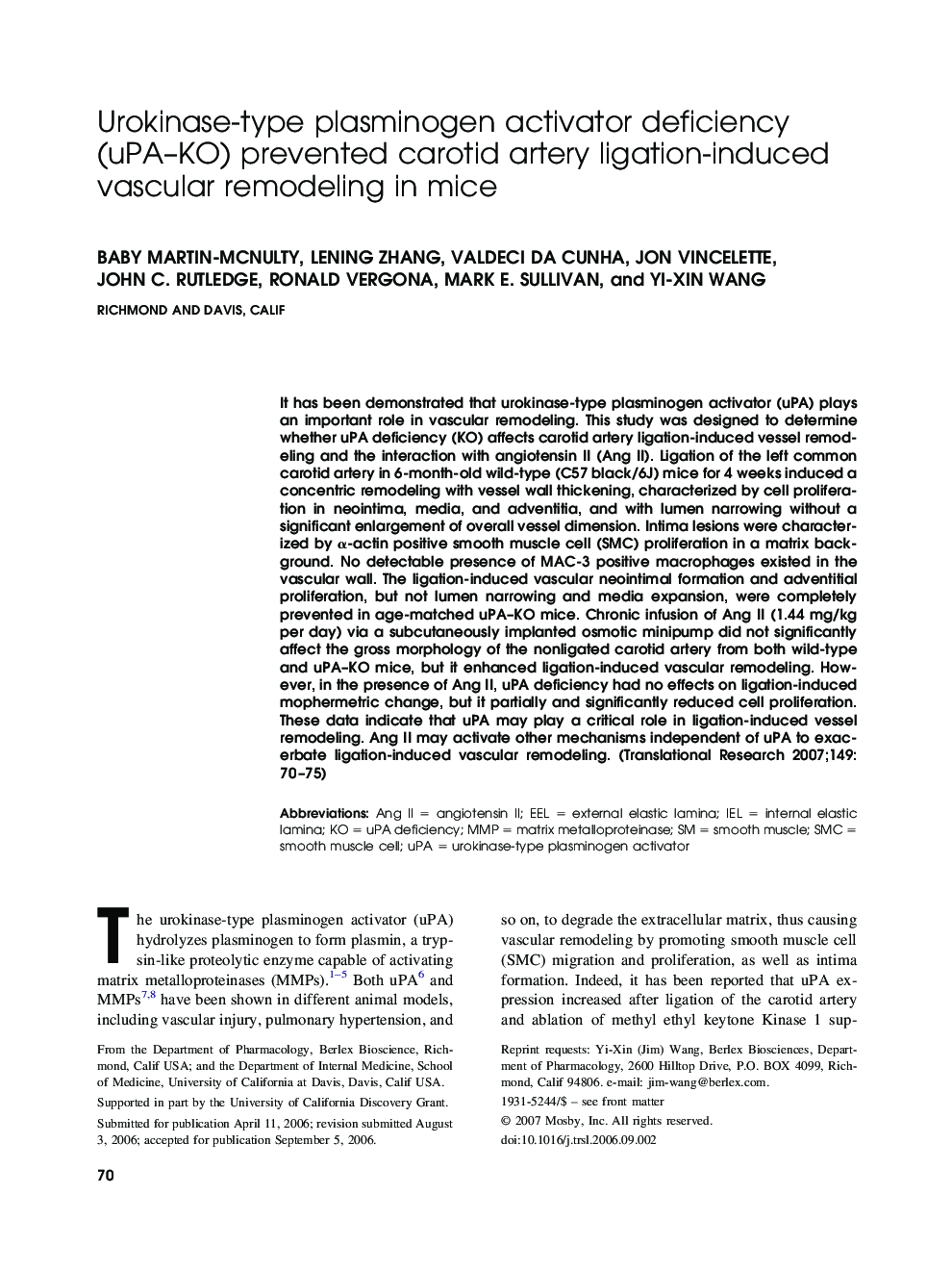| Article ID | Journal | Published Year | Pages | File Type |
|---|---|---|---|---|
| 3841616 | Translational Research | 2007 | 6 Pages |
It has been demonstrated that urokinase-type plasminogen activator (uPA) plays an important role in vascular remodeling. This study was designed to determine whether uPA deficiency (KO) affects carotid artery ligation-induced vessel remodeling and the interaction with angiotensin II (Ang II). Ligation of the left common carotid artery in 6-month-old wild-type (C57 black/6J) mice for 4 weeks induced a concentric remodeling with vessel wall thickening, characterized by cell proliferation in neointima, media, and adventitia, and with lumen narrowing without a significant enlargement of overall vessel dimension. Intima lesions were characterized by α-actin positive smooth muscle cell (SMC) proliferation in a matrix background. No detectable presence of MAC-3 positive macrophages existed in the vascular wall. The ligation-induced vascular neointimal formation and adventitial proliferation, but not lumen narrowing and media expansion, were completely prevented in age-matched uPA–KO mice. Chronic infusion of Ang II (1.44 mg/kg per day) via a subcutaneously implanted osmotic minipump did not significantly affect the gross morphology of the nonligated carotid artery from both wild-type and uPA–KO mice, but it enhanced ligation-induced vascular remodeling. However, in the presence of Ang II, uPA deficiency had no effects on ligation-induced mophermetric change, but it partially and significantly reduced cell proliferation. These data indicate that uPA may play a critical role in ligation-induced vessel remodeling. Ang II may activate other mechanisms independent of uPA to exacerbate ligation-induced vascular remodeling.
